The entire television industry is filled with the buzz that you fought for. You praised me, and I liked me. TV has already been tagged with a non-buyable label. However, from now on, it is really necessary for every household. The living room entertainment terminal products, after all, television has appeared in ordinary families in China for more than 40 years, its status is self-evident, and at the same time the current television technology update has changed from the simplest TV programs to high-definition broadcast, game entertainment, etc. Small items.
Do you remember your first TV at home? If you were a local tycoon in the 1980s, you must have seen the first generation of self-produced television in China, such as the Peony Card. At that time, there was a TV at home. It was definitely a scene to watch from neighbors. If you think about it, we already have a TV 40. For many years, we have indeed been unable to leave the television in our lives. It has become integrated with our lives.
The rapid development of television, from the beginning of the 7-inch black-and-white TV to the current ultra-thin TV, a short period of 40 years, has changed the appearance of the TV, which also gave us the thumbs up of the development of science and technology, today Don’t be bothered and obnoxious, we are going to use a nostalgic and tribute heart to count down classic TVs that disappeared in the past and look forward to the future.
80s: The TV is a symbol of wealth
In the 1980s, televisions had just begun to emerge in China. At that time, TV was the most valuable "electronic product" in the family. Every household had a very enviable existence. If there was a TV in that era, it was definitely a symbol of the "rich" class. In the 1980s, as the predecessor of China’s reform and opening up, people who are interested in technology products are now able to collect an 80’s FM black-and-white TV.
When I think of each time, each household does not have a separate living room or a relatively small unit housing, so there is no decoration and reasonable placement. It is very difficult to have a TV, so most TVs at the time were Placed at a slightly higher point in the home, it will be fixed around the corner for safety reasons. The television at that time can already be about 20 inches, so the weight can reach 20 kilograms. After all, it is a CRT fluorescent tube TV. So it has a very big "ass."
80s black and white CRT TVs are not like current LCD TVs. At the time, the first TVs were spherical screens. The second was a TV with very wide sides. At that time, the TVs could have borders of 5 to 8 inside, while the right side was also reserved. The location of the manual touch is very different from the current LCD TVs. When you think about it, you can see on the TV that the very popular Japanese movie hunt and the Chinese TV drama Journey to the West are really a kind of enjoy.
90's: TV in addition to becoming bigger and more "colored"
In the decade of the 10th century, the TV was transformed again in the 1990s, and the era of birth in the 1990s was also an era of reform and opening up. Television developed rapidly at this time and almost abandoned the small-size design with a very thick border. At the same time, TV is no longer the exclusive use of local tyrants, and most families have begun to add TV to the standard of the living room.
In the 1990s, many families had their own nests. With the living room having a bedroom, it was no longer a mix of designs. So it began to decorate the room as a whole. The TV appeared on a dedicated TV cabinet. Once again, the status has improved. At the same time, TV display technology has been upgraded. Although fluorescent tubes are mainly used, spherical screens are basically no longer used and replaced by flat-screen TVs.
At the same time, the size and shape of the TV have also been appropriately changed. The remote control appears on the TV. The size of the TV has also become larger. The TV has reached 29 inches, and the screen has changed from black to colored. Great improvement.
The appearance of flat-screen televisions has made the development of television a big step forward. Although the weight has become heavier and the thickness has increased, the distance between the sides of the frame has become the same. At the same time, the screen size can reach a maximum of 34 inches. The users of the TV madly chased, and the popular Beads and Kangxi's micro-social visits were repeatedly broadcasted on TVs of various households, proving that TV played a very good home entertainment effect.
00: TV show design mutation rear projection
In 2000, that is, the millennium that we used to say. After the 21st century, many fresh things appeared. In the 21st century torrent, everything is not strange, so it's no surprise to TV. TV is in this period, but it is precisely because of the appearance of such products that the front-line of big-screen TV has become wider.
The rear projection is that the observer and the projector are located on both sides of the rear projection screen, and the projector is installed at the bottom of the camera body. Part of the light is transmitted when the light projected from the projector is irradiated onto the translucent rear projection screen. What the observer sees is the transmitted light.
Because of the integration of the projector and the screen, the user of the rear projection TV does not need to adjust the system optically, so that the use of the projector is much more convenient than the front projector.
Rear-projection TVs are generally relatively large, and they are basically placed on the floor. The living room does not need any load-bearing devices. It only needs the TV to be placed in front of the TV wall in the living room, and the rear-projection TV can weigh up to 60 kg. , so without the design of the scroll wheel, it is very troublesome to move it once again, it will reduce the border again, only 3-5 cm.
The most important thing is that the resolution of rear-projection TV can already reach 720P at that time. Watching movies and TV shows are very clear. Do you still remember your favorite happy camp? It was at this time that it was broadcast. Considering that it has been nearly 20 years, the very popular Anti-Japanese TV drama, Sword, is still fiery. It can't stop its hot broadcast again and again after 10 years.
10's: TV screens have become thin
In the 10th century of the 21st century, television has changed from a rear projection to a thin, flat-screen TV. However, at the time, flat-panel TVs should not be thought of as ultra-thin televisions of today. This cannot be compared, but the panel technology has changed by leaps and bounds. The previous design was basically abandoned, new plasma, LCD panels began to appear, making the TV no longer cumbersome.
LED TV is actually a kind of liquid crystal display (LCD) TV, which is a kind of LCD TV. Its difference from traditional LCD TVs mainly lies in adopting different backlight sources, which brings a lot of differences in performance. LED TVs use light-emitting diodes as backlight sources, which are more advantageous than CCFL-backlit traditional LCD TVs in terms of thickness, picture quality, lifetime, and energy saving and environmental protection.
However, the thickness of LCD TVs that have just begun to appear can already reach 5-8 cm. This was impossible to imagine in the past. After all, ten years ago, TVs were large-ass TVs with fluorescent tubes. They needed to be far away from the walls in order to use them. lay down. Today's flat-panel TVs can be placed in the living room's TV cabinet and can also be wall-mounted to save space.
Most televisions in about 10 years have already exceeded 42 inches, and almost all bid farewell to the traditional 4:3 TV began to turn 16:9 mode, so that the TV becomes more flat, while the flat-panel TV will also be within 2 cm of the border , you can better use the screen size. At this time, the flat-panel TV can already display high-definition content. The very popular movie, Pirates of Dream Space, and the television drama that lurked in that year were definitely used for flat-screen TVs.
15 years: What is the TV screen?
Just this year, TV has undergone yet another round of innovations. The TV screen display technology has been upgraded again. What kind of scenes would you imagine this time? Bigger? Thinner? These are certainly all.
In fact, LG Display re-invented its screen display technology in 2015 with the ultimate design concept, making its new thin-art hard-screen TV able to stand out and allow more people to see the screen made by LG Display. Efforts, this time LG Display launched the thin hard-screen TV with its most important highlights as a breakthrough - "thin" and "art", this highlight in fact there is no absolute connection in the TV, but this time LG Display has taken the "thin" artistic feeling to the extreme. The thickness of the entire TV is only 7.5mm. There is no width of a finger from the side.

The rapid development of television, from the beginning of the 7-inch black-and-white TV to the current ultra-thin TV, a short period of 40 years, has changed the appearance of the TV, which also gave us the thumbs up of the development of science and technology, today Don’t be bothered and obnoxious, we are going to use a nostalgic and tribute heart to count down classic TVs that disappeared in the past and look forward to the future.
80s: The TV is a symbol of wealth
In the 1980s, televisions had just begun to emerge in China. At that time, TV was the most valuable "electronic product" in the family. Every household had a very enviable existence. If there was a TV in that era, it was definitely a symbol of the "rich" class. In the 1980s, as the predecessor of China’s reform and opening up, people who are interested in technology products are now able to collect an 80’s FM black-and-white TV.

80s TV appearance
The television technology of that era came almost entirely from its neighboring country, Japan, because Japan focused its efforts on the development of electronic technology after the Second World War. Its television technology is very popular. After entering China, many Chinese independent brands began to appear through Japanese television technology. In 1958, China’s first TV set, the Beijing TV set, was born, followed by the appearance of Venus TV and the Peony Card in the 1980s. Buying TVs in the 1980s became a popular frenzy. This is also China. The standard TV in the living room has been set up for 30 years. 
80s TV set on the table crowd watching


A very fierce film hunt and a 30 year journey to the West
80s black and white CRT TVs are not like current LCD TVs. At the time, the first TVs were spherical screens. The second was a TV with very wide sides. At that time, the TVs could have borders of 5 to 8 inside, while the right side was also reserved. The location of the manual touch is very different from the current LCD TVs. When you think about it, you can see on the TV that the very popular Japanese movie hunt and the Chinese TV drama Journey to the West are really a kind of enjoy.
90's: TV in addition to becoming bigger and more "colored"
In the decade of the 10th century, the TV was transformed again in the 1990s, and the era of birth in the 1990s was also an era of reform and opening up. Television developed rapidly at this time and almost abandoned the small-size design with a very thick border. At the same time, TV is no longer the exclusive use of local tyrants, and most families have begun to add TV to the standard of the living room.
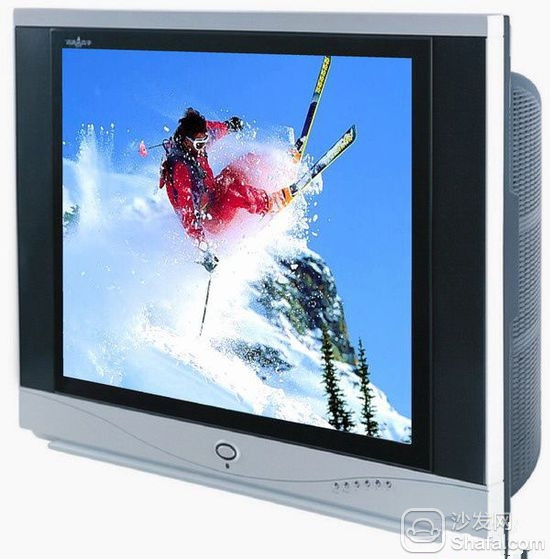
90's flat-screen TV
In the 1990s, many families had their own nests. With the living room having a bedroom, it was no longer a mix of designs. So it began to decorate the room as a whole. The TV appeared on a dedicated TV cabinet. Once again, the status has improved. At the same time, TV display technology has been upgraded. Although fluorescent tubes are mainly used, spherical screens are basically no longer used and replaced by flat-screen TVs.

90's TV has been placed on the TV cabinet
At the same time, the size and shape of the TV have also been appropriately changed. The remote control appears on the TV. The size of the TV has also become larger. The TV has reached 29 inches, and the screen has changed from black to colored. Great improvement.
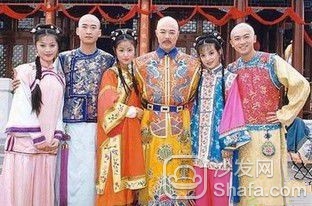

Pearl Pearl and Kangxi’s private visits
The appearance of flat-screen televisions has made the development of television a big step forward. Although the weight has become heavier and the thickness has increased, the distance between the sides of the frame has become the same. At the same time, the screen size can reach a maximum of 34 inches. The users of the TV madly chased, and the popular Beads and Kangxi's micro-social visits were repeatedly broadcasted on TVs of various households, proving that TV played a very good home entertainment effect.
00: TV show design mutation rear projection
In 2000, that is, the millennium that we used to say. After the 21st century, many fresh things appeared. In the 21st century torrent, everything is not strange, so it's no surprise to TV. TV is in this period, but it is precisely because of the appearance of such products that the front-line of big-screen TV has become wider.

The rear projection TV that appeared in 2000
As the name implies, the rear projection is the rear projection TV. An illusion projection and reflection principle that puts the screen and projection system in one integrated television display system. In the projection display device, the projection display is divided into two types: front projection and back projection. The rear projection is that the observer and the projector are located on both sides of the rear projection screen, and the projector is installed at the bottom of the camera body. Part of the light is transmitted when the light projected from the projector is irradiated onto the translucent rear projection screen. What the observer sees is the transmitted light.
Because of the integration of the projector and the screen, the user of the rear projection TV does not need to adjust the system optically, so that the use of the projector is much more convenient than the front projector.
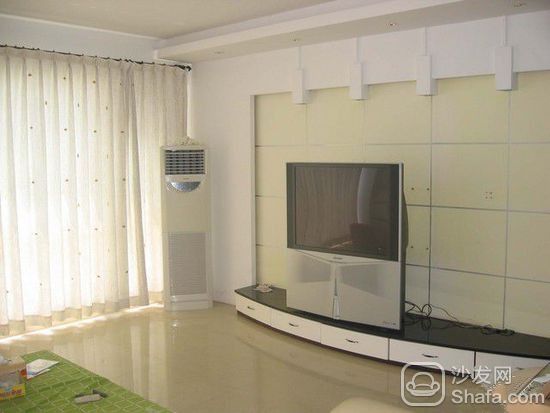
Rear projection TV placed directly on the living room floor


How many people were affected by the drama Sword, Happy Camp brought 15 years of joy
10's: TV screens have become thin
In the 10th century of the 21st century, television has changed from a rear projection to a thin, flat-screen TV. However, at the time, flat-panel TVs should not be thought of as ultra-thin televisions of today. This cannot be compared, but the panel technology has changed by leaps and bounds. The previous design was basically abandoned, new plasma, LCD panels began to appear, making the TV no longer cumbersome.

10 years have appeared flat-panel TV is no longer cumbersome
LED TV is actually a kind of liquid crystal display (LCD) TV, which is a kind of LCD TV. Its difference from traditional LCD TVs mainly lies in adopting different backlight sources, which brings a lot of differences in performance. LED TVs use light-emitting diodes as backlight sources, which are more advantageous than CCFL-backlit traditional LCD TVs in terms of thickness, picture quality, lifetime, and energy saving and environmental protection.
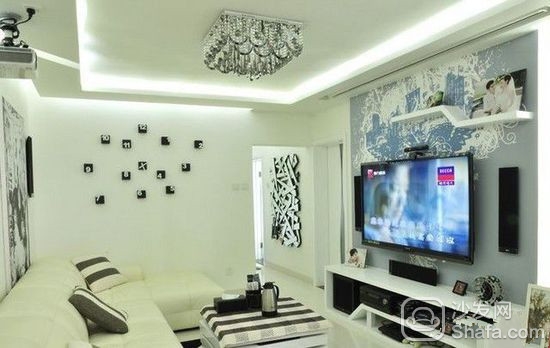
Flat-screen TVs can be hung or placed on the TV table
However, the thickness of LCD TVs that have just begun to appear can already reach 5-8 cm. This was impossible to imagine in the past. After all, ten years ago, TVs were large-ass TVs with fluorescent tubes. They needed to be far away from the walls in order to use them. lay down. Today's flat-panel TVs can be placed in the living room's TV cabinet and can also be wall-mounted to save space.


Pirates of dream space is extremely popular
15 years: What is the TV screen?
Just this year, TV has undergone yet another round of innovations. The TV screen display technology has been upgraded again. What kind of scenes would you imagine this time? Bigger? Thinner? These are certainly all.

15 years of latest thin art television
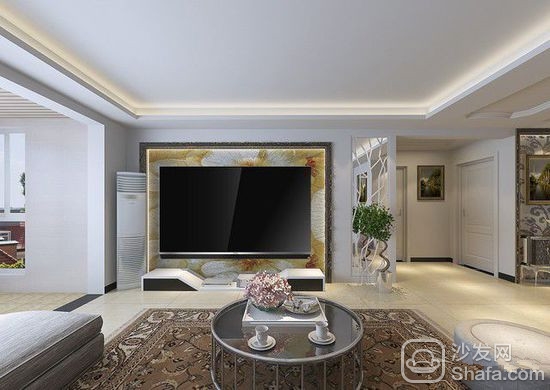
Seamlessly hung on the wall
The new thin-art hard-screen TV first has a 4 color 4K hard screen as a guarantee, its high-brightness ultra-clear picture quality and high light transmittance can show clear and clean image quality, while it has a wider color gamut, can be more rich The colors make the picture clearer and fresher. The new thin-art hard-screen TV has a wider viewing angle and the front viewing angle can reach 160 degrees. The wide viewing angle technology that is not limited by the angle presents a perfect picture quality without color aberration. 

Hot variety run brothers and fiery TV drama Wu Mei Niang legend TV hits
Thin Art hard screen TV has a thin design, 7.5mm ultra-thin design, compared with the current smart phone, also no less, 55-inch TV is only about 15 kg, lightweight and exquisite. Nowadays more and more people choose to hang the TV on the wall which is both beautiful and space-saving. With a thickness of 7.5mm and a weight of 15kg, the hard art screen hangs on the wall, and the wall can be perfectly combined with the surrounding homes to enhance the harmony of the decoration. Its borderless border design is like an artwork. Is the real "preferred in wall-mounted TV."